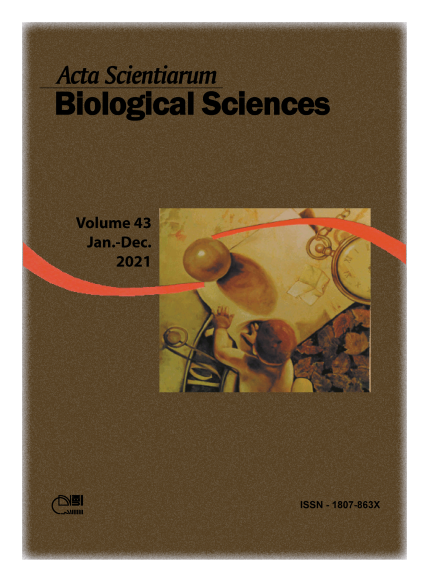Limonoid detection and profile in callus culture of sweet orange
Abstract
Plant tissue culture has emerged as an important tool to produce bioactive compounds from various plant species, including the sustainable production of limonoids that are receiving considerable attention due to the benefits associated with human health such as anticancer activities. The purpose of the present study was to evaluate the capacity of limonoids aglycone production from callus culture from sweet orange cv. Pera (Citrus sinensis) seeds and identify the compounds produced in this cell line. Callus induction occurred in Murashige and Skoog medium supplemented with 2,4-dichlorophenoxyacetic (2,4-D), malt extract, agar and coconut water. For the analysis and identification of the limonoids, CG-MS-EI ion-positive mode and UPLC-QTOF-ESI were used operating in positive and negative mode. An intense peak corresponding to limonin appeared in the callus extracts at a retention time of 58.1 min. in CG-MS-EI and four major limonoids aglycone by positive ion mode UPLC-QTOF-ESI: limonin, nomilin, deacetylnomilin, and nomilinic acid. The culture medium was efficient at the bioproduction of limonoids aglycone in callus cultures of C. sinensis seeds. Therefore, data obtained from UPLC-QTOF-ESI proved its importance at identifying new compounds that benefit human health, and may assist future work in the identification of known or new limonoids in Citrus species and related genera.
Downloads
DECLARATION OF ORIGINALITY AND COPYRIGHTS
I Declare that current article is original and has not been submitted for publication, in part or in whole, to any other national or international journal.
The copyrights belong exclusively to the authors. Published content is licensed under Creative Commons Attribution 4.0 (CC BY 4.0) guidelines, which allows sharing (copy and distribution of the material in any medium or format) and adaptation (remix, transform, and build upon the material) for any purpose, even commercially, under the terms of attribution.
Read this link for further information on how to use CC BY 4.0 properly.












1.png)




3.png)













